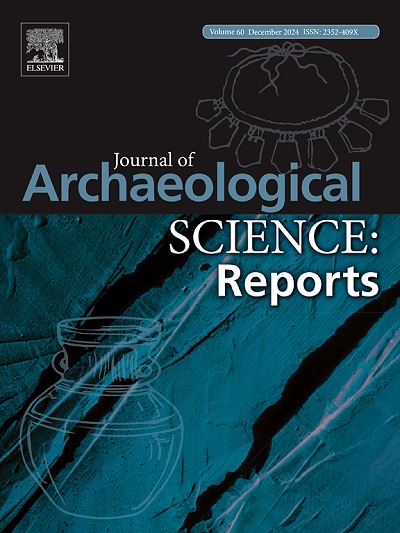Gendered burial practices in Copper Age non-adults of Iberia: Evidence from peptide-based sex identification at Humanejos (Madrid, Spain)
IF 1.5
2区 历史学
0 ARCHAEOLOGY
引用次数: 0
Abstract
This study examines how gender influenced funerary practices for children in Copper Age Iberian societies by analysing the biological sex of 35 non-adult individuals from the Copper Age necropolis of Humanejos. A combination of peptide-based analysis and ancient DNA (aDNA) profiling, osteological examination and the analysis of archaeological indicators, including grave goods, offer further context on social and cultural aspects of the burials. This multi-method approach reveals distinct burial patterns, most notably a marked absence of female individuals among those sexed and evidence that gender roles were ascribed at very early ages, consistent with biological sex determinations. Additionally, the analysis identifies specific funerary practices in which gender significantly influenced treatment, highlighting the symbolic importance of gender identity in burial contexts. These findings contribute new perspectives on social organization and the symbolic roles of children in Copper Age Iberia, offering a deeper understanding of how gender was constructed and represented in mortuary practices. The results enrich the understanding of childhood in prehistoric Iberia and challenge prior assumptions about the uniformity of burial customs across age and gender groups.
伊比利亚铜器时代非成年人的性别埋葬习俗:来自Humanejos(西班牙马德里)基于多肽的性别鉴定的证据
本研究通过分析来自铜器时代赫曼内乔斯墓地的35名非成人个体的生理性别,探讨了性别如何影响铜器时代伊比利亚社会儿童的丧葬习俗。基于肽的分析和古代DNA (aDNA)分析、骨学检查和考古指标分析(包括墓葬)的结合,为墓葬的社会和文化方面提供了进一步的背景。这种多方法的方法揭示了不同的埋葬模式,最明显的是在那些性别中明显没有女性个体,并且有证据表明性别角色在很小的时候就被赋予了,与生物性别决定一致。此外,分析还确定了具体的丧葬习俗,其中性别显著影响治疗,突出了性别认同在丧葬背景下的象征重要性。这些发现为研究铜器时代伊比利亚的社会组织和儿童的象征性角色提供了新的视角,并对性别如何在殡葬实践中被建构和表现提供了更深入的理解。研究结果丰富了对史前伊比利亚儿童的理解,并挑战了之前关于不同年龄和性别群体埋葬习俗一致性的假设。
本文章由计算机程序翻译,如有差异,请以英文原文为准。
求助全文
约1分钟内获得全文
求助全文
来源期刊

Journal of Archaeological Science-Reports
ARCHAEOLOGY-
CiteScore
3.10
自引率
12.50%
发文量
405
期刊介绍:
Journal of Archaeological Science: Reports is aimed at archaeologists and scientists engaged with the application of scientific techniques and methodologies to all areas of archaeology. The journal focuses on the results of the application of scientific methods to archaeological problems and debates. It will provide a forum for reviews and scientific debate of issues in scientific archaeology and their impact in the wider subject. Journal of Archaeological Science: Reports will publish papers of excellent archaeological science, with regional or wider interest. This will include case studies, reviews and short papers where an established scientific technique sheds light on archaeological questions and debates.
 求助内容:
求助内容: 应助结果提醒方式:
应助结果提醒方式:


